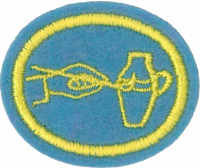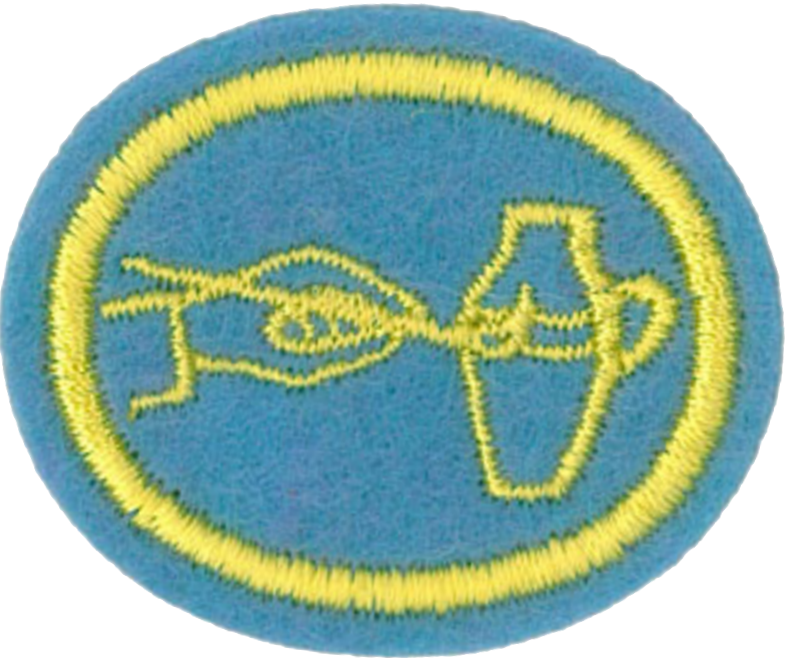Difference between revisions of "AY Honors/Ceramics/Answer Key 2"
m (Jomegat moved page AY Honor Ceramics Answer Key used by General Conference to AY Honor Ceramics Answer Key used by North American Division without leaving a redirect: Part of translatable page "AY Honors/Ceramics/Answer Key") |
m |
||
| (2 intermediate revisions by 2 users not shown) | |||
| Line 1: | Line 1: | ||
{{HonorSubpage}} | {{HonorSubpage}} | ||
| − | + | {{#vardefine:reqpage|AY Honors/Ceramics/Requirements 2}} | |
| − | + | ||
| − | {{ | ||
| − | |||
<section begin="Body" /> | <section begin="Body" /> | ||
| − | {{ansreq|page={{# | + | {{ansreq|page={{#var:reqpage}}|num=1}} |
<noinclude><translate><!--T:33--> | <noinclude><translate><!--T:33--> | ||
</noinclude> | </noinclude> | ||
| Line 40: | Line 38: | ||
<noinclude></translate></noinclude> | <noinclude></translate></noinclude> | ||
{{CloseReq}} <!-- 1 --> | {{CloseReq}} <!-- 1 --> | ||
| − | {{ansreq|page={{# | + | {{ansreq|page={{#var:reqpage}}|num=2}} |
<noinclude><translate><!--T:35--> | <noinclude><translate><!--T:35--> | ||
</noinclude> | </noinclude> | ||
<!-- 2. Know what is meant by the following terms: --> | <!-- 2. Know what is meant by the following terms: --> | ||
<noinclude></translate></noinclude> | <noinclude></translate></noinclude> | ||
| − | {{ansreq|page={{# | + | {{ansreq|page={{#var:reqpage}}|num=2a}} |
<noinclude><translate><!--T:36--> | <noinclude><translate><!--T:36--> | ||
</noinclude> | </noinclude> | ||
| Line 52: | Line 50: | ||
<noinclude></translate></noinclude> | <noinclude></translate></noinclude> | ||
{{CloseReq}} <!-- 2a --> | {{CloseReq}} <!-- 2a --> | ||
| − | {{ansreq|page={{# | + | {{ansreq|page={{#var:reqpage}}|num=2b}} |
<noinclude><translate><!--T:37--> | <noinclude><translate><!--T:37--> | ||
</noinclude> | </noinclude> | ||
| Line 59: | Line 57: | ||
<noinclude></translate></noinclude> | <noinclude></translate></noinclude> | ||
{{CloseReq}} <!-- 2b --> | {{CloseReq}} <!-- 2b --> | ||
| − | {{ansreq|page={{# | + | {{ansreq|page={{#var:reqpage}}|num=2c}} |
<noinclude><translate><!--T:38--> | <noinclude><translate><!--T:38--> | ||
</noinclude> | </noinclude> | ||
| Line 66: | Line 64: | ||
<noinclude></translate></noinclude> | <noinclude></translate></noinclude> | ||
{{CloseReq}} <!-- 2c --> | {{CloseReq}} <!-- 2c --> | ||
| − | {{ansreq|page={{# | + | {{ansreq|page={{#var:reqpage}}|num=2d}} |
<noinclude><translate><!--T:39--> | <noinclude><translate><!--T:39--> | ||
</noinclude> | </noinclude> | ||
| Line 73: | Line 71: | ||
<noinclude></translate></noinclude> | <noinclude></translate></noinclude> | ||
{{CloseReq}} <!-- 2d --> | {{CloseReq}} <!-- 2d --> | ||
| − | {{ansreq|page={{# | + | {{ansreq|page={{#var:reqpage}}|num=2e}} |
<noinclude><translate><!--T:40--> | <noinclude><translate><!--T:40--> | ||
</noinclude> | </noinclude> | ||
| Line 80: | Line 78: | ||
<noinclude></translate></noinclude> | <noinclude></translate></noinclude> | ||
{{CloseReq}} <!-- 2e --> | {{CloseReq}} <!-- 2e --> | ||
| − | {{ansreq|page={{# | + | {{ansreq|page={{#var:reqpage}}|num=2f}} |
<noinclude><translate><!--T:41--> | <noinclude><translate><!--T:41--> | ||
</noinclude> | </noinclude> | ||
| Line 87: | Line 85: | ||
<noinclude></translate></noinclude> | <noinclude></translate></noinclude> | ||
{{CloseReq}} <!-- 2f --> | {{CloseReq}} <!-- 2f --> | ||
| − | {{ansreq|page={{# | + | {{ansreq|page={{#var:reqpage}}|num=2g}} |
<noinclude><translate><!--T:42--> | <noinclude><translate><!--T:42--> | ||
</noinclude> | </noinclude> | ||
| Line 94: | Line 92: | ||
<noinclude></translate></noinclude> | <noinclude></translate></noinclude> | ||
{{CloseReq}} <!-- 2g --> | {{CloseReq}} <!-- 2g --> | ||
| − | {{ansreq|page={{# | + | {{ansreq|page={{#var:reqpage}}|num=2h}} |
<noinclude><translate><!--T:43--> | <noinclude><translate><!--T:43--> | ||
</noinclude> | </noinclude> | ||
| Line 102: | Line 100: | ||
{{CloseReq}} <!-- 2h --> | {{CloseReq}} <!-- 2h --> | ||
{{CloseReq}} <!-- 2 --> | {{CloseReq}} <!-- 2 --> | ||
| − | {{ansreq|page={{# | + | {{ansreq|page={{#var:reqpage}}|num=3}} |
<noinclude><translate><!--T:45--> | <noinclude><translate><!--T:45--> | ||
</noinclude> | </noinclude> | ||
| Line 116: | Line 114: | ||
<noinclude></translate></noinclude> | <noinclude></translate></noinclude> | ||
{{CloseReq}} <!-- 3 --> | {{CloseReq}} <!-- 3 --> | ||
| − | {{ansreq|page={{# | + | {{ansreq|page={{#var:reqpage}}|num=4}} |
<noinclude><translate><!--T:47--> | <noinclude><translate><!--T:47--> | ||
</noinclude> | </noinclude> | ||
| Line 131: | Line 129: | ||
<noinclude></translate></noinclude> | <noinclude></translate></noinclude> | ||
{{CloseReq}} <!-- 4 --> | {{CloseReq}} <!-- 4 --> | ||
| − | {{ansreq|page={{# | + | {{ansreq|page={{#var:reqpage}}|num=5}} |
<noinclude><translate><!--T:49--> | <noinclude><translate><!--T:49--> | ||
</noinclude> | </noinclude> | ||
| Line 147: | Line 145: | ||
<noinclude></translate></noinclude> | <noinclude></translate></noinclude> | ||
{{CloseReq}} <!-- 5 --> | {{CloseReq}} <!-- 5 --> | ||
| − | {{ansreq|page={{# | + | {{ansreq|page={{#var:reqpage}}|num=6}} |
<noinclude><translate><!--T:51--> | <noinclude><translate><!--T:51--> | ||
</noinclude> | </noinclude> | ||
| Line 159: | Line 157: | ||
<noinclude></translate></noinclude> | <noinclude></translate></noinclude> | ||
{{CloseReq}} <!-- 6 --> | {{CloseReq}} <!-- 6 --> | ||
| − | {{ansreq|page={{# | + | {{ansreq|page={{#var:reqpage}}|num=7}} |
<noinclude><translate><!--T:53--> | <noinclude><translate><!--T:53--> | ||
</noinclude> | </noinclude> | ||
<!-- 7. Complete two of the following using underglaze on one item, and food-safe glaze on the second item: --> | <!-- 7. Complete two of the following using underglaze on one item, and food-safe glaze on the second item: --> | ||
<noinclude></translate></noinclude> | <noinclude></translate></noinclude> | ||
| − | {{ansreq|page={{# | + | {{ansreq|page={{#var:reqpage}}|num=7a}} |
<noinclude><translate><!--T:54--> | <noinclude><translate><!--T:54--> | ||
</noinclude> | </noinclude> | ||
<noinclude></translate></noinclude> | <noinclude></translate></noinclude> | ||
{{CloseReq}} <!-- 7a --> | {{CloseReq}} <!-- 7a --> | ||
| − | {{ansreq|page={{# | + | {{ansreq|page={{#var:reqpage}}|num=7b}} |
<noinclude><translate><!--T:55--> | <noinclude><translate><!--T:55--> | ||
</noinclude> | </noinclude> | ||
<noinclude></translate></noinclude> | <noinclude></translate></noinclude> | ||
{{CloseReq}} <!-- 7b --> | {{CloseReq}} <!-- 7b --> | ||
| − | {{ansreq|page={{# | + | {{ansreq|page={{#var:reqpage}}|num=7c}} |
<noinclude><translate><!--T:56--> | <noinclude><translate><!--T:56--> | ||
</noinclude> | </noinclude> | ||
<noinclude></translate></noinclude> | <noinclude></translate></noinclude> | ||
{{CloseReq}} <!-- 7c --> | {{CloseReq}} <!-- 7c --> | ||
| − | {{ansreq|page={{# | + | {{ansreq|page={{#var:reqpage}}|num=7d}} |
<noinclude><translate><!--T:57--> | <noinclude><translate><!--T:57--> | ||
</noinclude> | </noinclude> | ||
<noinclude></translate></noinclude> | <noinclude></translate></noinclude> | ||
{{CloseReq}} <!-- 7d --> | {{CloseReq}} <!-- 7d --> | ||
| − | {{ansreq|page={{# | + | {{ansreq|page={{#var:reqpage}}|num=7e}} |
<noinclude><translate><!--T:58--> | <noinclude><translate><!--T:58--> | ||
</noinclude> | </noinclude> | ||
<noinclude></translate></noinclude> | <noinclude></translate></noinclude> | ||
{{CloseReq}} <!-- 7e --> | {{CloseReq}} <!-- 7e --> | ||
| − | {{ansreq|page={{# | + | {{ansreq|page={{#var:reqpage}}|num=7f}} |
<noinclude><translate><!--T:59--> | <noinclude><translate><!--T:59--> | ||
</noinclude> | </noinclude> | ||
<noinclude></translate></noinclude> | <noinclude></translate></noinclude> | ||
{{CloseReq}} <!-- 7f --> | {{CloseReq}} <!-- 7f --> | ||
| − | {{ansreq|page={{# | + | {{ansreq|page={{#var:reqpage}}|num=7g}} |
<noinclude><translate><!--T:60--> | <noinclude><translate><!--T:60--> | ||
</noinclude> | </noinclude> | ||
Latest revision as of 12:26, 13 August 2021
1
It is believed that the earliest pottery wares were hand-built and fired in bonfires. Firing times were short but the peak-temperatures achieved in the fire could be high, perhaps in the region of 900 degrees Celsius, and were reached very quickly. Early bonfire-fired wares were made with rounded bottoms, to avoid sharp angles that might be susceptible to cracking. The earliest intentionally constructed kilns were pit-kilns or trench-kilns; holes dug in the ground and covered with fuel. Holes in the ground provided insulation and resulted in better control over firing.
The earliest pottery ware found to date was excavated from a cave in southern China.
The invention of the potter's wheel in Mesopotamia revolutionized pottery production. Potters were able to work quickly and produce pottery to meet the expanding needs of the world's first cities.
Ceramics began in China 6,000 years ago during the New Stone Age whose advent was marked by the invention pottery. The earliest earthenware was moulded by hand and the potter's wheel was something that came much later. In the beginning, clay was fired at a temperature of about 500-600 degrees celsius. Painted pottery began to be known during the period of Yangshao and Longshan Cultures.
The large legion of terra-cotta soldiers and horses of the Qin Dynasty (221 - 207 B.C.) which were discovered in the province of Shaanxi in 1974, are eloquent proof of the high skills in kiln-firing and sculpture attained at that early age. The art of pottery reached another peak of development in the Tang Dynasty (618 - 907 A.D.), as evidenced by the renowned "tri-coloured glaze."
Wucheng Village of Qingjiang County, Jiangxi Province vessles of blue-glazed ware have been unearthed. Upon examination, they proved to have been made of kaolin and fired at high temperatures of 1,200C. Their surface is coated with a glaze, whose chemical composition is very close to that of their bodies. Certain procelains of the Song (960 - 1279) and Ming (1368 - 1644) dynasties were already celadon, though at its early stages.
Chinese ceramics became known to the world at large from the Tang Dynasty so much so that the word "china" became the name of procelain. Chinese procelain, together with Chinese tea and silk flowed through the Silk Road and other land and sea routes to foreign countries.
The quality of pottery has varied historically, depending on the reputation the potter made for himself in his community.
2
2a
2b
2c
2d
2e
2f
2g
2h
3
Cones are a necessary, vital tool in ceramics, signalling the user that the correct firing time and temperature have been reached.
There are two types of cones:
- a) Small cones that are used in manual kilns. They are placed between a device called a kiln sitter, when they have melted or deformed the kiln shuts off.
- b) Large cones also known as witness cones are used in automatic computerized kilns. As the kiln is automatic they are used to check how the kiln has fired once opened, signalling any problems.
4
Underglaze can be used on greenware or bisque and is applied with a brush or sponge.
Glaze is used after you have decorated your bisque. Can be applied using a brush or dipping decorated bisque in a container of glaze. This glaze gives your bisque a glass finish once fired in a kiln.
Stain is used for decorating bisque. It can be applied using a brush or sponges. The stain goes on the bisque before the glaze.
5
There are endless tools used in completing a ceramic project, including:
- Brushes
- sponge
- decals
- stamps
- stencils
- kiln
- etc.
6
The difference between glaze and food-safe glaze is that glaze is used on anything other than surfaces that come in contact with food or drink, and food-safe glaze can be used on any dinnerware, such as mugs, bowls, plates, serving dishes, etc.
Regular glaze contains lead and some toxins. Food-safe glaze is completely lead-free and non-toxic.
7
7a
7b
7c
7d
7e
7f
7g
Go find a ceramic studio and get creating. Most importantly, have fun!
Note: Candidate need not do the firing.
References
- History of Ceramics taken from excerpts in Wikipedia under heading "Pottery".
- Other definitions obtained from Mrs. Doris Wade, owner and operator of Xclusive Creations, a pottery studio in Bermuda. Compiled by Eileen King, Director of the Warwick Longtails Pathfinder club in Bermuda.


